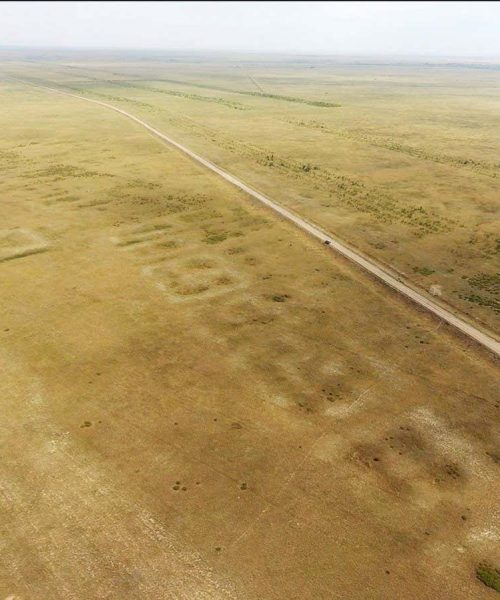
Korolevo quarry in Ukraine, one of the oldest hominin sites in Europe
Roman Garba
Molecular dating has revealed that an area in Ukraine was occupied by humans 1.4 million years ago, making it one of the oldest hominin sites in Europe and possibly the oldest.
The site, at Korolevo in western Ukraine, has been studied since the 1970s. A large number of stone tools have been found buried in layers of sediment beside an outcrop of volcanic rock suitable to be made into tools.
Advertisement
“This was like a magnet for bringing the people there, and they were camping nearby,” says Roman Garba at the Czech Academy of Sciences in Prague.
No bones have been found as the soil is too acidic to preserve them, he says, but it is assumed that the hominins were Homo erectus, a species that evolved around 2 million years ago and spread from Africa to Europe and Asia.
While it has been clear that early hominins were present at the Korolevo site repeatedly over hundreds of thousands of years, we haven’t known exactly when they were present. But Garba’s team has now dated the oldest layer containing tools to 1.4 million years ago, using a technique called cosmogenic nuclide dating.
This method relies on cosmic rays that are so energetic that they can split the nuclei of atoms and generate unusual isotopes. However, these isotopes form only on exposed areas, as these cosmic rays don’t penetrate far into solid objects.
Once objects are buried, radioactive isotopes generated by cosmic rays decay into other isotopes, allowing the time of burial to be determined.
Another early hominin site in Dmanisi in Georgia has been dated to 1.7 million years ago, while other sites in France and Spain are around 1.2 million years old. This suggests that early humans moved from Africa through Georgia and into Ukraine, then west into the rest of Europe, says Garba, though it is also possible that some crossed the Bosphorus Strait in Turkey.
It has been suggested that some hominins crossed the Gibraltar Strait to reach Spain when sea levels were lower than present, then moved east into the rest of Europe, but there is no evidence to support this, says Garba.
While part of Georgia is in Europe geographically and the whole country is seen as part of Europe politically, the site of Dmanisi is geographically located in Asia, says Garba. So he and his team regard Korolevo as the oldest human site in Europe that has been reliably dated.
“Korolevo represents, to our knowledge, the earliest securely dated hominin presence in Europe,” the paper states.
“I agree that the new age estimates are important, and they support the idea of an early east-west dispersal,” says Chris Stringer at the Natural History Museum in London.
But this was already apparent because four other sites in western Europe have already been dated to around 1.4 million years ago, he says.
Garba says that while it is possible that these other sites are as old, the dating of them is questionable. “We can’t be as sure about them,” he says. “They are not secure or not robust.”
“I respectfully disagree,” says Stringer.
Topics:





